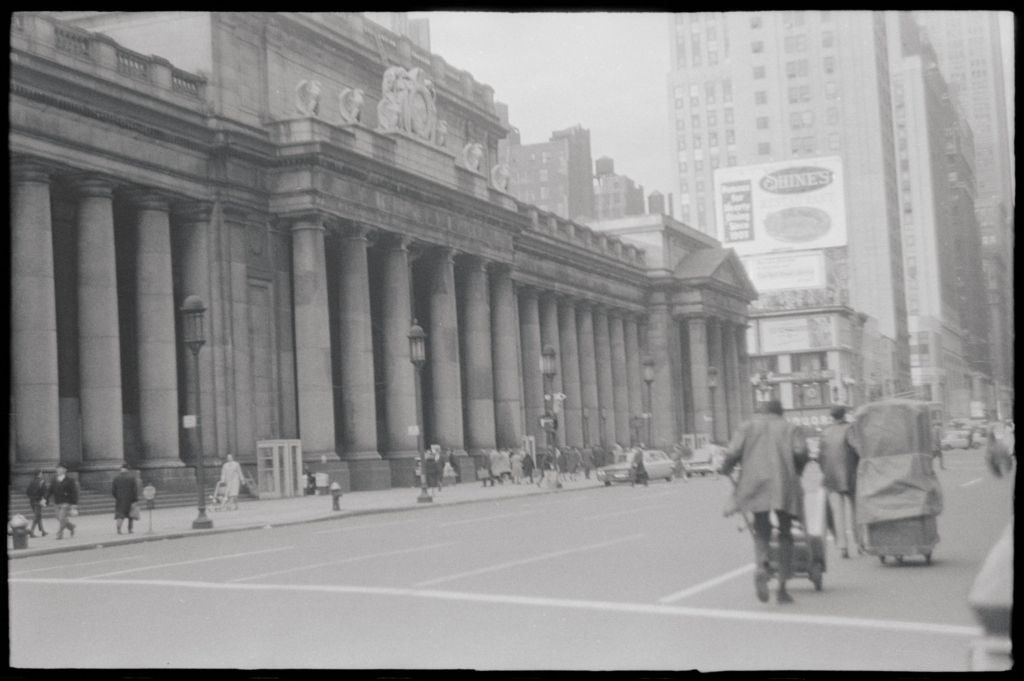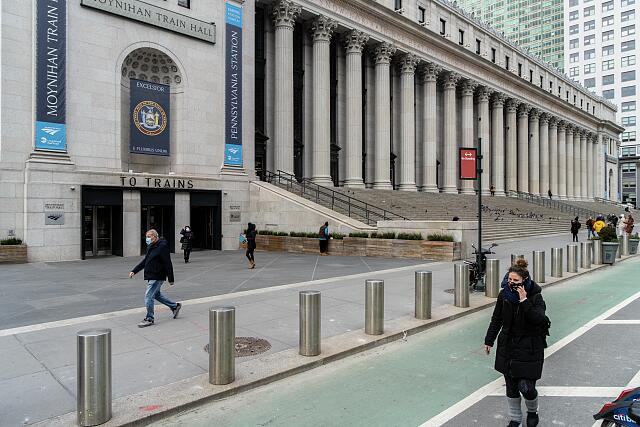Welcome to PennStations.com, your guide to the iconic train stations that shaped America’s rail history. These stations, originally named after the mighty Pennsylvania Railroad (PRR), symbolized an era when railroads were the backbone of transportation. Today, they remain vital for millions of commuters and travelers while preserving the architectural and cultural legacy of the railroad’s golden age.
What’s in a Name? The Origins of Penn Station
In the early 1900s, the Pennsylvania Railroad, the largest rail network in the U.S. at its peak, created monumental stations in key cities to serve as hubs for its growing empire. These stations, all named “Pennsylvania Station” were more than transit stops—they were grand civic landmarks designed to inspire awe.
The most famous was New York Penn Station, which opened in 1910. Designed by McKim, Mead & White, this Beaux-Arts masterpiece featured towering marble columns, expansive waiting rooms, and a stunning glass train shed. It wasn’t alone; the Pennsylvania Railroad built similar stations in cities across the Northeast and Midwest, including Philadelphia, Pittsburgh, Baltimore, and Newark, creating a network of Penn Stations that connected millions of passengers.
Fun Fact: New York’s original Penn Station was designed by architects McKim, Mead & White, who also shaped Columbia University and the Brooklyn Museum.

The Miriam and Ira D. Wallach Division of Art, Prints and Photographs: Photography Collection, The New York Public Library. “Penn Station. New York, NY” The New York Public Library Digital Collections. 1940 – 1979. https://digitalcollections.nypl.org/items/edb08450-12c4-0133-5fd0-58d385a7bbd0
The Golden Era of Penn Stations
During rail travel’s peak in the early 20th century, Penn Stations were bustling hubs of activity. Here’s a look at some of the key stations from the Pennsylvania Railroad’s heyday:
- New York Penn Station (1910):
- The largest and most famous of the Penn Stations, it was a marvel of engineering and architecture. Sadly, the above-ground structure was demolished in 1963, but the station continues to serve millions daily.
- Philadelphia Penn Station (1933):
- Replaced by 30th Street Station in 1933, which remains one of the busiest Amtrak hubs in the U.S.
- Pittsburgh Penn Station (1901):
- Known for its stunning rotunda and grand design, this station still serves Amtrak passengers and has been repurposed for mixed use, including residential space.
- Baltimore Penn Station (1911):
- A neoclassical gem, this station continues to serve as the primary Amtrak and commuter rail hub for Baltimore.
- Newark Penn Station (1935):
- A blend of Art Deco and modern design, this station connects Amtrak, NJ Transit, and PATH systems, serving millions annually.
- Harrisburg Penn Station (1887):
- Originally opened as a key stop on the Pennsylvania Railroad, it is now the Harrisburg Transportation Center, a beautifully restored station serving Amtrak’s Keystone Service and Capitol Limited lines.
- Cleveland Union Terminal (1930):
- While no longer called “Penn Station,” this terminal was heavily utilized by the Pennsylvania Railroad. Today, it has been repurposed into a shopping and office complex known as Tower City Center, with some transit functionality.
- Smaller Penn Stations (Various Dates):
- Across smaller towns and cities, many Penn Stations were built in the early 20th century. While some remain in operation or have been restored, others were closed, demolished, or converted into altrnative spaces.
The Fall and Legacy of Penn Stations
As car travel and air travel took over in the mid-20th century, railroads like the PRR struggled to stay profitable. This led to the closure or demolition of many historic stations. The most significant loss was New York Penn Station’s grand structure, torn down in 1963 to make way for Madison Square Garden. Its destruction sparked public outrage and led to the birth of the historic preservation movement in the U.S. The demolition directly inspired NYC’s Landmarks Preservation Act, saving Grand Central and countless other buildings.

Vergara, Camilo J, photographer. Moynihan Train Hall, 8th Ave. at 31th St., Manhattan
. January 8. Photograph. Retrieved from the Library of Congress, <www.loc.gov/item/2021635212/>.
However, the legacy of Penn Stations lives on. While some have been lost, others have been repurposed or modernized, blending history with functionality:
- Moynihan Train Hall (NYC): Opened in 2021, this modern expansion of New York Penn Station reclaims some of the grandeur of the original, with its skylit atrium and sleek design.
- Restored Icons: Baltimore Penn Station and Newark Penn Station remain architectural treasures, serving millions of passengers annually.
- Functional Spaces: Stations like Pittsburgh Union Station and Harrisburg Transportation Center continue to operate while adapting to modern needs.
Why Penn Stations Matter Today
Penn Stations aren’t just historical landmarks; they’re living connections between the past and the present. They remind us of the transformative power of rail travel and the importance of preserving our architectural heritage.
For modern travelers, these stations are still vital transit hubs. Whether you’re commuting, taking a long-distance Amtrak journey, or simply exploring the history of these iconic locations, Penn Stations remain central to American transportation.
